🌍 EU Geopolitics in 2025: Strategy, Security & Realignment
As global power shifts intensify, 2025 marks a critical year for the European Union's geopolitical playbook. From Russia’s prolonged aggression and China’s strategic presence in Africa to Middle Eastern energy pivots and Indo-Pacific ambitions — Europe is rapidly rethinking its security architecture and foreign relations.
In this article, we explore the EU’s defense upgrades, tech sovereignty push, and growing role as a regulatory power. We also map how Brussels is aligning with NATO, recalibrating diplomacy, and countering hybrid threats across its neighborhood and beyond.
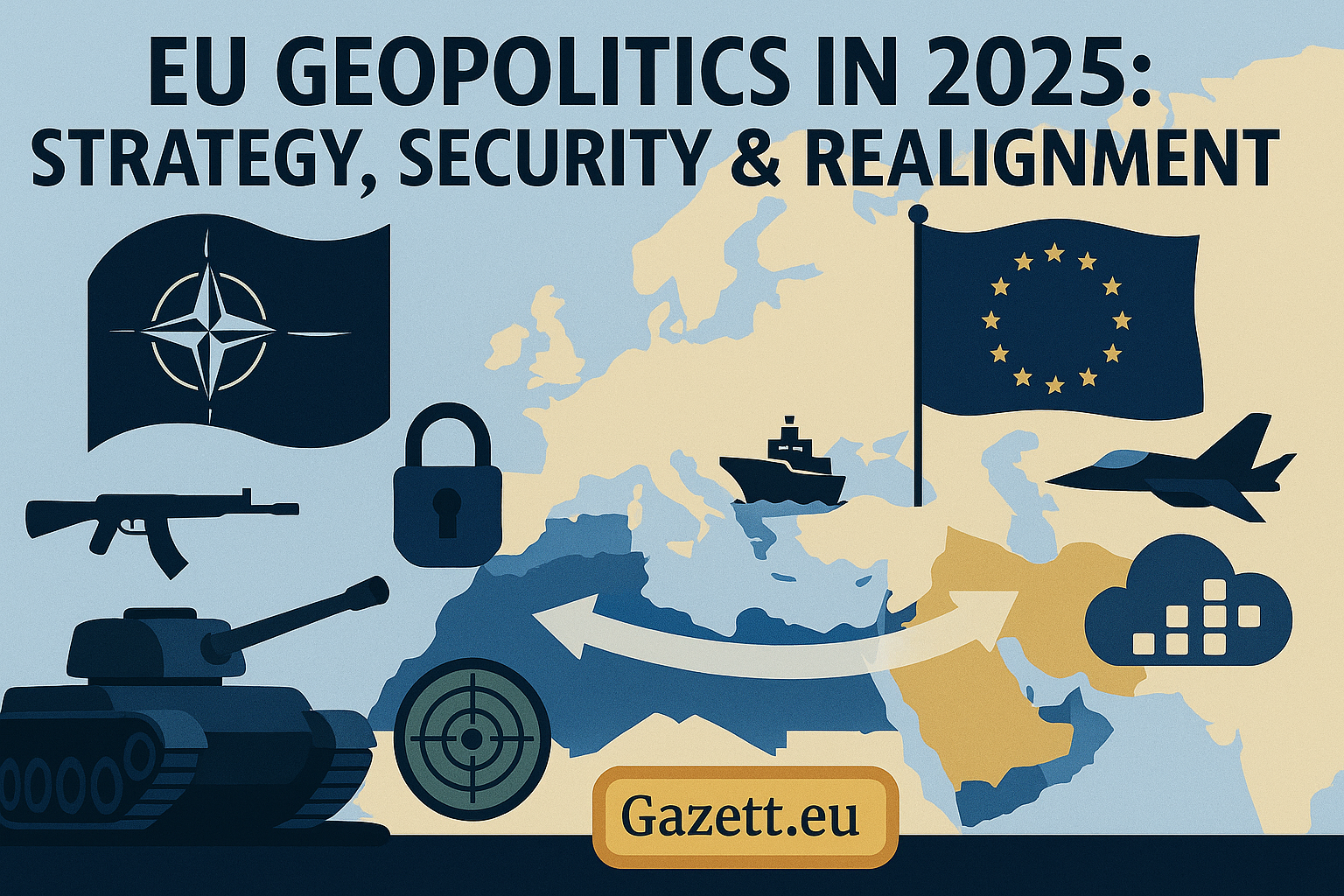
📚 Table of Contents
- 1. Defense Spending & Security Commitments
- 2. Tech Sovereignty & Strategic Dependencies
- 3. Neighborhood Hotspots: Ukraine, Balkans, Sahel
- 4. Indo-Pacific & Transatlantic Realignment
- 5. Hybrid Threats: Cyber, AI, Disinformation
- 6. Diplomatic Footprint: Regulation as Power
- ✅ Conclusion + Summary Table + CTA
🛡️ Defense Spending & Security Commitments
In 2025, the European Union is witnessing an unprecedented shift in its collective defense posture. For the first time, over 20 EU member states are spending more than 2% of GDP on defense — driven by NATO obligations, war in Ukraine, and hybrid threat escalation.
Germany’s Zeitenwende strategy, France’s renewed Indo-Pacific naval priorities, and Poland’s rapid arms acquisitions have created a new layer of continental deterrence. Europe’s defense industry is also expanding fast, with joint procurement funds, PESCO missions, and drone/satellite programs gaining momentum.
- 💶 €330B+ projected total EU defense spending in 2025 (up from €250B in 2022)
- 🤝 NATO & EU synchronization in Eastern Europe and Mediterranean missions
- 🔭 Space and ISR systems now considered core to EU security architecture
- 🛰️ Rise of EU-based satellite firms under IRIS² and Galileo constellations
- 🏭 Investment surge in munitions, armored vehicles, cyber defense platforms
This military reset marks Europe’s intent to no longer rely solely on U.S. power — but to project “strategic responsibility with sovereign capabilities”.
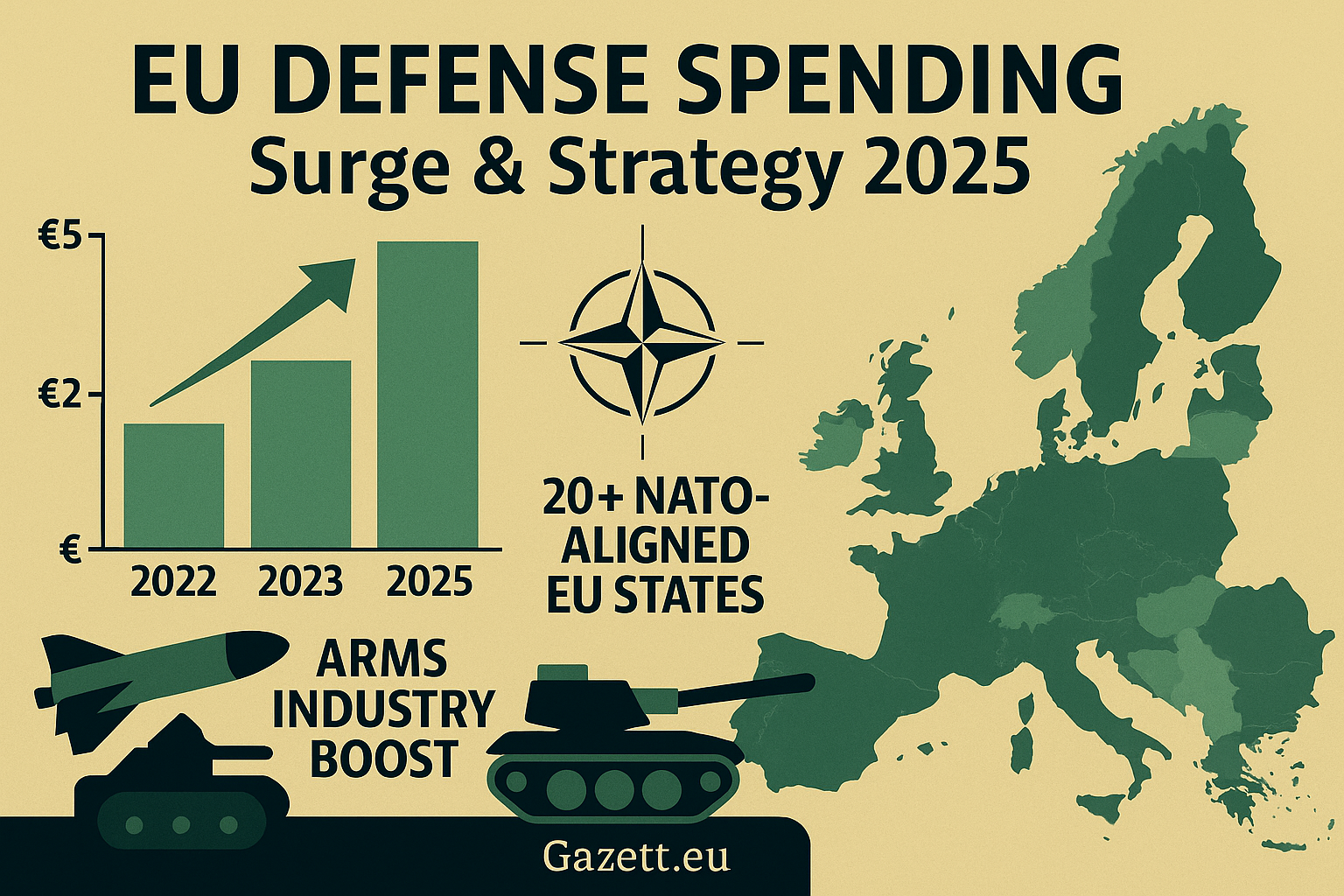
Internal reference: European Defense Industrial Strategy 2025
⚙️ Tech Sovereignty & Strategic Dependencies
In the face of escalating geopolitical uncertainty, the EU is making tech sovereignty a core pillar of its strategic autonomy agenda. The experience of chip shortages, cloud reliance on U.S. hyperscalers, and Chinese control over rare earths has triggered a policy wave focused on control, resilience, and independence.
Key initiatives like the European Chips Act, Gaia-X, and Critical Raw Materials Act are reshaping supply chains and investment priorities. Member states are co-investing in fabs, cloud infrastructure, and innovation clusters for semiconductors, AI, quantum, and 6G.
- 🧠 €43B Chips Act to localize design-to-fab capabilities by 2030
- ☁️ Gaia-X Alliance expands as France and Germany launch sovereign cloud zones
- ⚒️ Strategic reserves in lithium, cobalt, and rare earths to reduce China dependence
- 🤖 AI Act & data regulations positioning the EU as a digital rule-setter
- 🔬 Joint labs in photonics, quantum computing, and deeptech accelerators
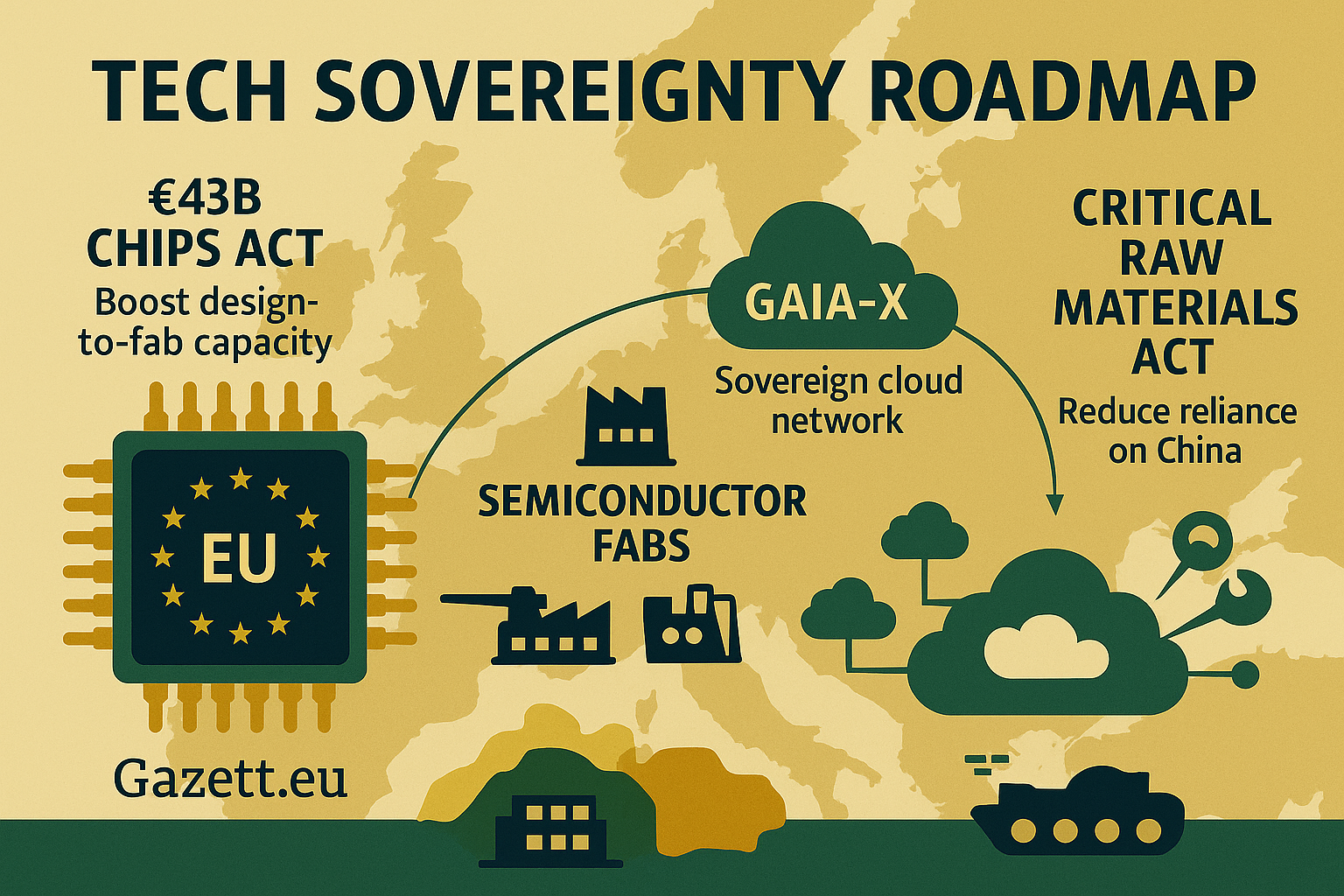
The EU is no longer just regulating — it’s building. And with it, emerges a new industrial logic: technology equals power.
Internal reference: European Semiconductor Strategy 2025
🌍 Neighborhood Hotspots – Ukraine, Balkans, Sahel
In 2025, the EU’s geopolitical environment remains volatile on multiple flanks. The war in Ukraine has entered a new phase of attrition, forcing the EU to maintain sanctions pressure on Russia while navigating global fatigue and energy dilemmas.
The Western Balkans remain fragile, with renewed instability in Kosovo-Serbia and slow EU enlargement talks. Simultaneously, the Sahel crisis is worsening — with coups, Wagner Group influence, and jihadist groups spilling into West African states, testing the limits of EU security engagement.
- 🛰️ Ukraine: Continued EU military support, winter energy infrastructure strikes, refugee flows
- 🇷🇸 Balkans: EUFOR presence extended, diplomacy under strain amid local elections
- 🌍 Sahel: Withdrawal of French troops shifts focus to Niger, coastal West Africa, and EU NAVFOR patrols
- 🛂 Migration pressures: rising from Mediterranean + Eastern routes
- 🪖 EU Strategic Compass: being reoriented to include cyber + maritime border domains
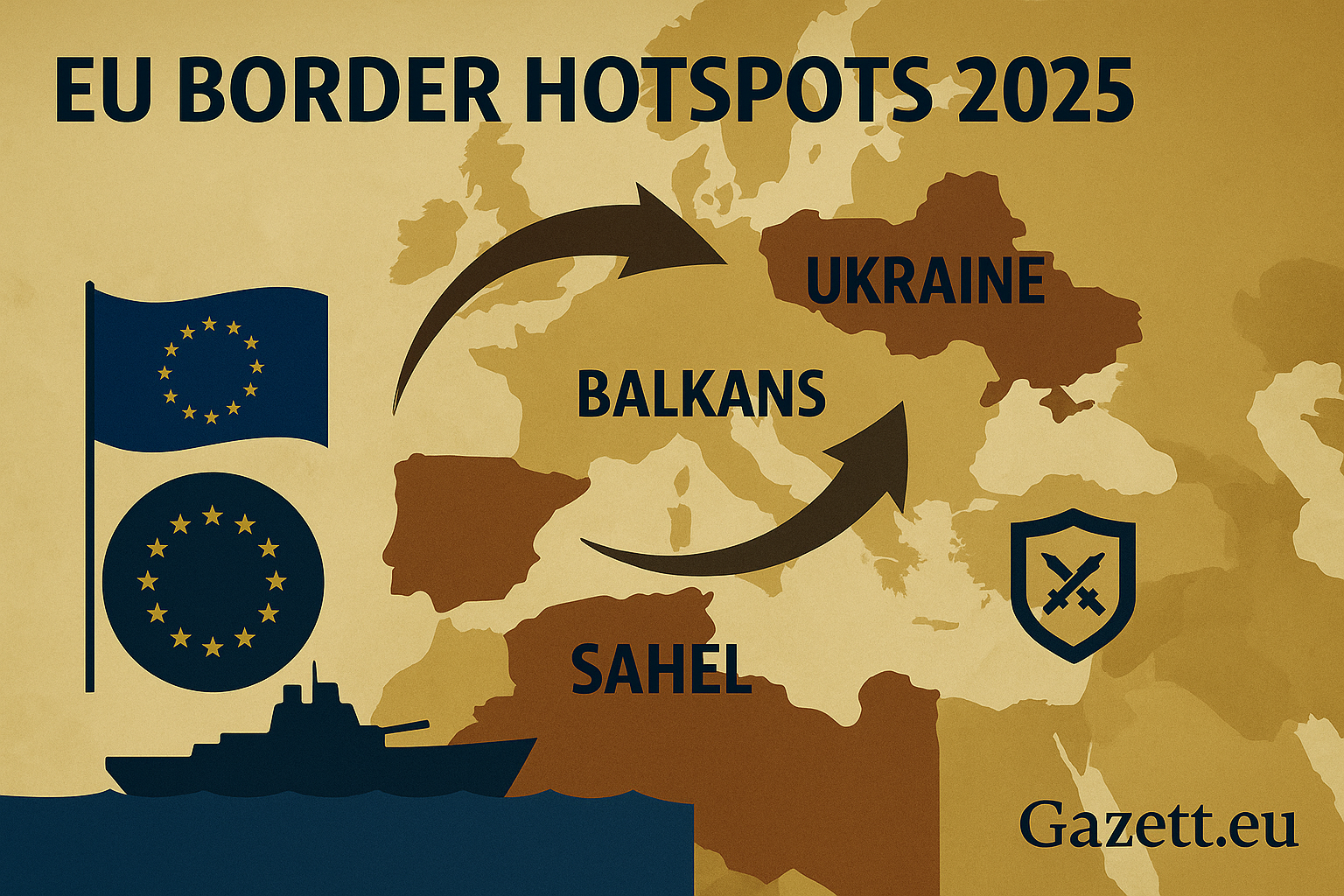
The EU’s foreign policy is no longer just diplomatic — it’s operational. These hotspots define where Europe’s ambitions meet global reality.
Internal reference: EU–Balkans Accession & Security 2025
🌊 Indo-Pacific & Transatlantic Realignment
In 2025, Europe’s global power posture is shifting west and east at once. With rising tensions in the Taiwan Strait, South China Sea, and Indian Ocean, the EU is embedding itself deeper in the Indo-Pacific — while also recalibrating its security and trade axis with the United States and Canada.
The EU–India Strategic Trade and Tech Council (TTC), supply chain pacts with Japan and Korea, and defense dialogues with Australia mark the Indo-Pacific push. Meanwhile, transatlantic ties remain central, albeit with growing tension on digital taxes, green subsidies, and China policy.
- 🛰️ Indo-Pacific Priorities: Maritime security, chips, AI alignment, resilient supply chains
- 🌏 EU–ASEAN Dynamics: Investment into Vietnam, Singapore, and Indonesia rising
- 🤝 Transatlantic Balance: Defense unity with NATO, but economic friction with the U.S.
- 📜 TTC Expansion: Trade, tech, and trusted infrastructure dialogues with India and Japan
- 🚢 France & Germany: Sending more naval presence through Indo-Pacific drills
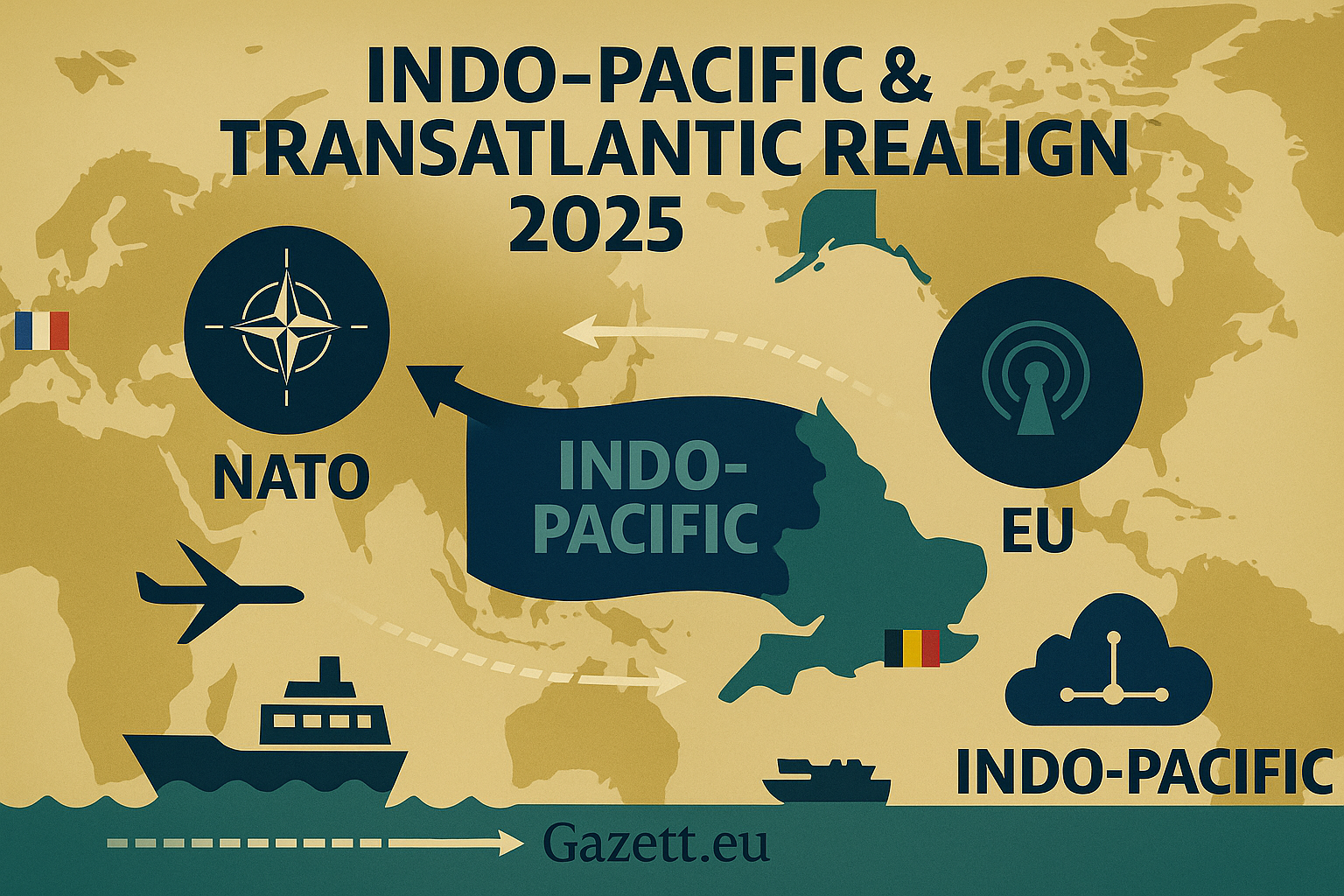
Whether in the Baltic or the Bay of Bengal, Europe’s influence in 2025 depends on multilateral muscle — and its ability to play smart in both Atlantic and Indo-Pacific theatres.
Internal reference: EU Indo-Pacific Strategy 2025
🧠 Hybrid Threats: Cyber, AI, Disinformation
In 2025, the EU faces a new generation of threats that blur the lines between war and influence. From coordinated cyberattacks and AI-generated propaganda to deepfakes and electoral interference, hybrid warfare is now a permanent feature of Europe’s security landscape.
Russia, China, Iran, and non-state actors are weaponizing both data and trust, while Europe counters with its evolving toolbox: the Cybersecurity Act, AI Act, and newly launched European Centre for Democratic Resilience. But the race is tight — and misinformation moves faster than regulation.
- 💻 State-Sponsored Cyber Ops: Attacks on EU satellites, banks, grid infrastructure rising
- 🎭 AI-Generated Disinfo: Deepfake videos and GPT-powered fake news in elections
- 🧠 Cognitive Warfare: Targeted narratives in Balkans, Baltics, Sahel shaping public trust
- 🔐 EU Digital Shield: Joint cyber units, DORA rollout, public-private resilience drills
- ⚖️ AI Act in Action: Rules on algorithmic transparency, chatbot ID, and high-risk bans
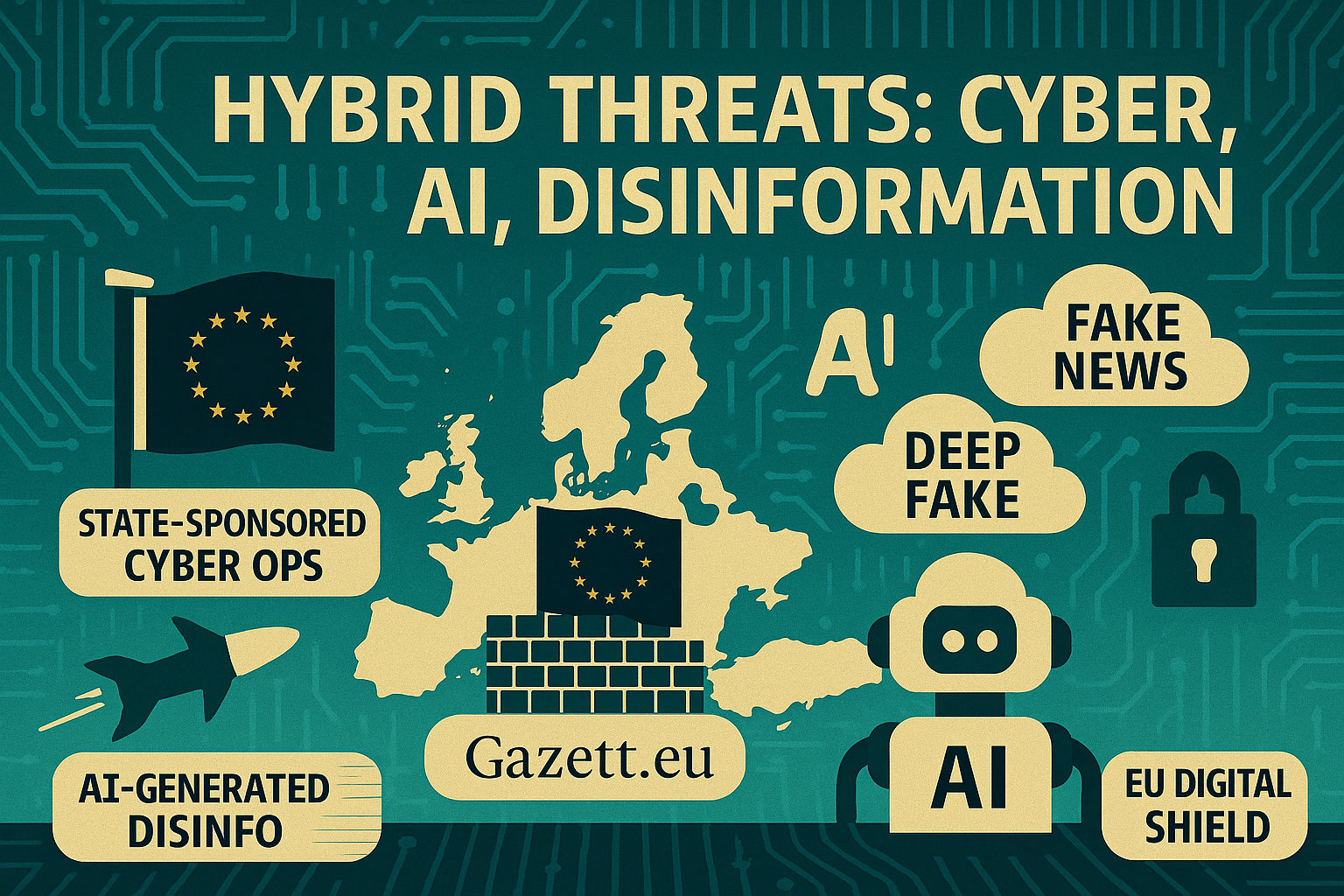
The frontlines of Europe’s new battles aren’t always physical — they’re algorithmic, invisible, and emotional. And they demand not just defense, but digital democracy design.
Internal reference: EU Cyber & AI Security Strategy 2025
🏛️ Diplomatic Footprint: Regulation as Power
The EU’s strongest global weapon in 2025 isn’t military — it’s regulatory. From GDPR and the AI Act to the Carbon Border Adjustment Mechanism (CBAM), Brussels is exporting rules instead of troops. This "Brussels Effect" is shaping global norms on tech, environment, and markets.
As U.S.–China rivalry intensifies, Europe is positioning itself as a standards-setter in a fragmented world. African, Asian, and Latin American partners increasingly view the EU’s regulatory clarity as both a safeguard and soft-power strategy — especially in digital trade, climate compliance, and ESG benchmarks.
- 📜 GDPR & AI Act: Global spillover into Latin America, Africa, and ASEAN platforms
- 🌍 Green Rules: CBAM, deforestation ban, ESG laws guiding climate trade diplomacy
- 📦 Supply Chain Transparency: Corporate due diligence laws affecting global exporters
- 🧑⚖️ Digital Trade Standards: Cybersecurity, data privacy, and competition models exported
- ⚖️ Regulatory Diplomacy: Joint rulemaking frameworks with India, Japan, and the U.S.
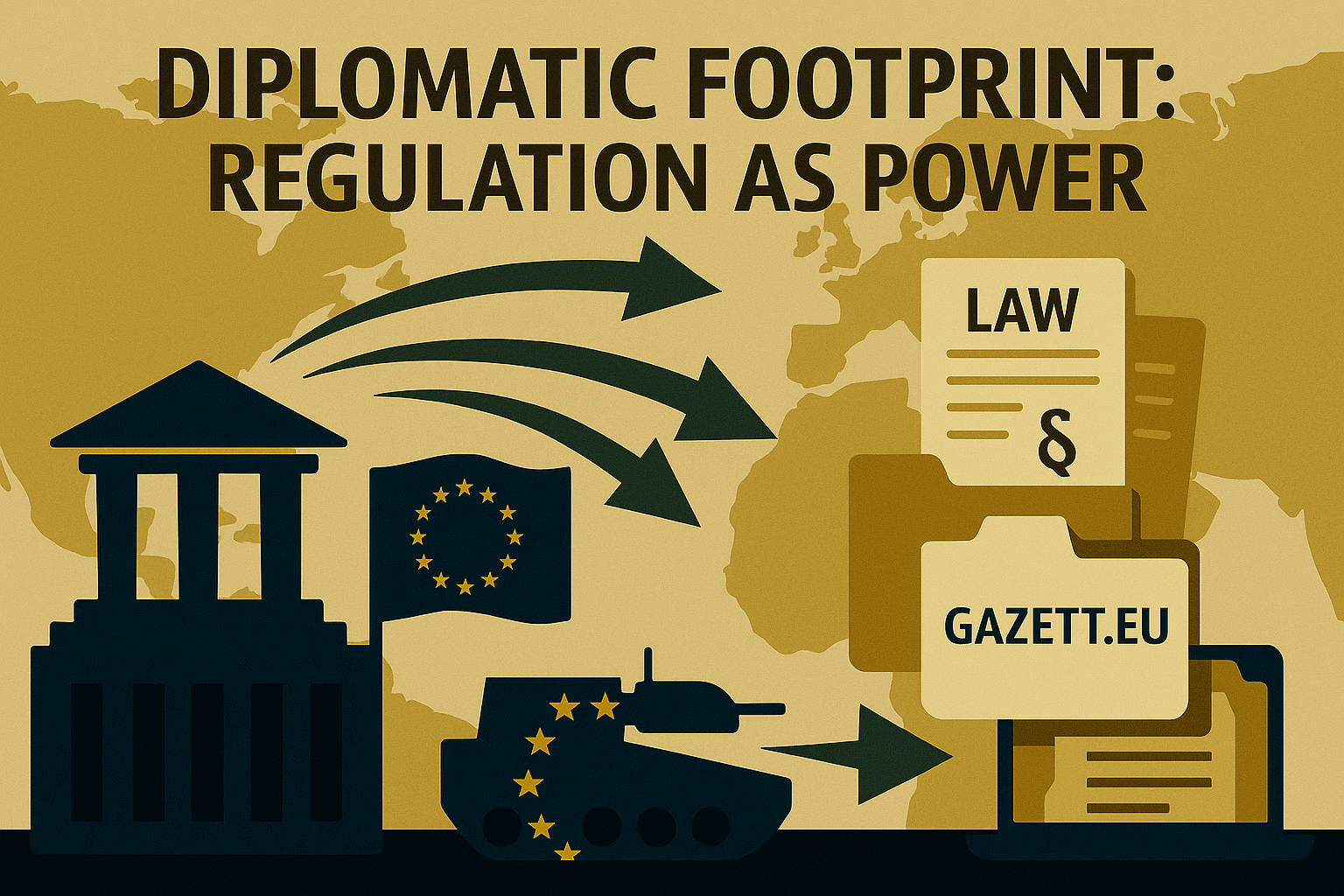
As Brussels legislates, boardrooms listen — and diplomats follow. The EU’s regulatory diplomacy in 2025 is not just about enforcement; it’s about influence.
Internal reference: EU Regulation as Soft Power
✅ Summary: Europe’s Geopolitical Reset in 2025
The year 2025 marks a pivotal shift in how the European Union navigates a multipolar, militarized, and digitally entangled world. From ramping up defense to recalibrating trade and diplomacy, the EU is reengineering itself for a new era of strategic competition.
Whether in Brussels or Bucharest, Paris or Pristina, the central question for policymakers is no longer *if* Europe needs to act, but *how fast* it can align its tools of power — economic, technological, and military — for 21st century relevance.
| Pillar | Strategic Focus |
|---|---|
| Defense | €380B EU defense spend, NATO upgrades, Ukraine focus |
| Tech Sovereignty | AI Act, EU Chips Act, digital infrastructure push |
| Hybrid Threats | Cyber, AI disinfo warfare, resilience drills & AI governance |
| Alliances | Indo-Pacific strategy, transatlantic recalibration, BRICS watch |
| Regulatory Power | GDPR, CBAM, digital & climate rules exported globally |
External sources: EU Council, European Defence Agency, European Commission, NATO, EEAS